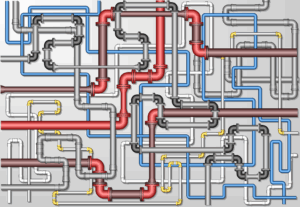Over the years, I’ve refined a meeting template for use with my innovation teams, ensuring that our collective energy is channeled toward creating impact instead of getting bogged down in unproductive discussions. This template has gained popularity among team members because it clearly defines responsibilities and deadlines. Senior leaders have found it beneficial as well, as it outlines the support the team requires and provides all the necessary information for decision-making ahead of the meeting.
Let’s delve into how this agenda can streamline your meetings and enhance your innovation process. First and foremost, bring people together only when the topics benefit from group input, insight, or awareness. If a topic doesn’t benefit from this input, then why hold a meeting? It should simply be conveyed through an email.
Secondly, aim to keep meetings within a 30-minute timeframe. Nobody has the time for hour-long meetings, particularly leaders.
Master the Agenda
The key elements of this agenda are as follows:
- Topic: Clearly define the focus of the discussion and allocate an appropriate amount of time to it. Topics should be selected carefully; only those that drive the project forward and require input from the team or a leader should be discussed. Be ruthless in your selection process. Prioritize decisions over updates, unless those updates are critical for project progress. Avoid using meeting time for a round-robin of updates.
- Time Allocation: Limit discussions on any topic to a maximum of 20 minutes. If a topic necessitates more time, consider scheduling a separate meeting dedicated to that specific topic.
- Lead: Clearly designate the person responsible for leading the discussion for each agenda item. Typically, a lead is also accountable for that part of the project.
- Expected Outcome: Specify why each item is on the agenda and what is expected from the group or a leader – whether it’s a decision, alignment, or an update.
- Pre-read Material: Emphasize that pre-read materials should be reviewed before the meeting. In-meeting review is a time-wasting practice and it disincentivizes people to prepare; treat the pre-read as homework.
- Next Steps: During the meeting, fill out the next steps section live to ensure everyone is aligned on the decisions made and the actions to be taken, including deadlines.
Identify Next Steps
I recommend sending out the agenda at least two days before the meeting, allowing ample time for all attendees to prepare.
Following the meeting, redistribute the agenda with the attendees and the identified next steps included. Review these actions at the beginning of your next meeting to ensure they have been completed.
By adhering to this template, you will quickly identify any obstacles that require attention and pinpoint who needs support. If you would like to obtain a copy of this template in either PPT or Word format, please feel free to contact me on LinkedIn.
Click here for more columns by Gail Martino; if you enjoy this content, please consider connecting with Gail Martino on LinkedIn.

Contributor
-

Gail Martino, Ph.D is a thought leader and global innovation leader in the fast-moving consumer goods industry, having worked with billion-dollar brands at Unilever and previously at Gillette. With a background spanning both corporate and academic roles, Gail has a proven track record in developing and executing highly effective innovation ecosystems, driving value through strategic partnerships and internal product development. Notably, she has been a valued member of the advisory board for the Front End of Innovation conference since 2015.
View all posts




























































































































































